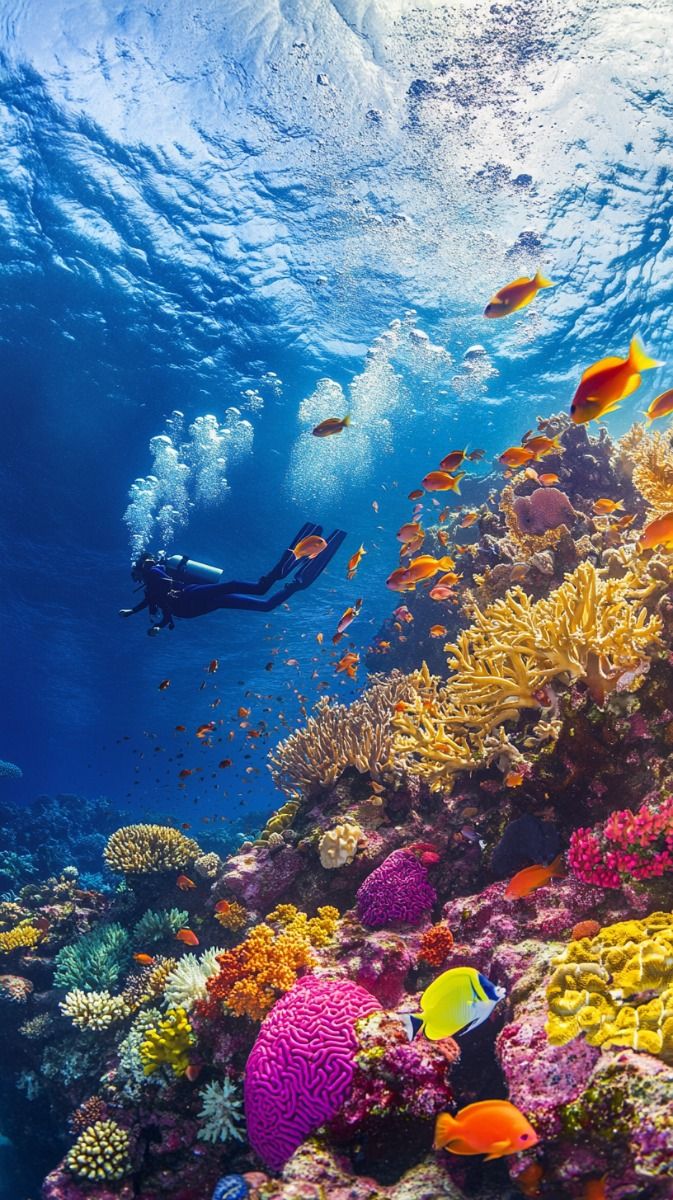Great Barrier Reef, Australia: The Wonder of the Ocean
History of the Great Barrier Reef
The Great Barrier Reef, located off the coast of Queensland, Australia, is the world’s largest coral reef system. Stretching over 2,300 kilometers and comprising 2,900 individual reefs and 900 islands, it has been forming for an estimated 20 million years. Indigenous Australians, particularly the Aboriginal and Torres Strait Islander peoples, have lived in harmony with the reef for tens of thousands of years, considering it a vital part of their culture and spirituality.
The reef gained global attention in the 20th century due to its breathtaking biodiversity and ecological significance. It was designated a UNESCO World Heritage Site in 1981 and has since been a symbol of natural beauty and environmental importance.
Daily Life in the Great Barrier Reef Region
For the communities living near the reef, daily life is intrinsically connected to its health and resources. The reef supports livelihoods through fishing, tourism, and marine research. Traditional owners of the reef engage in sustainable practices that protect its biodiversity.
Tourists flock to the region for activities like snorkeling, diving, and glass-bottom boat tours. These experiences not only drive the local economy but also raise awareness about marine conservation.
Impact of the Great Barrier Reef on Daily Life Globally
The reef’s significance goes beyond Australia. As the largest living structure on Earth, it plays a critical role in global marine ecosystems. It provides habitats for over 1,500 species of fish, 400 types of coral, and numerous other marine creatures.
Moreover, the reef’s health impacts global climate systems. Its coral ecosystems act as carbon sinks, helping to regulate atmospheric carbon levels. Unfortunately, threats like coral bleaching, pollution, and overfishing have placed the reef in danger, highlighting the urgent need for collective global action.
Fascinating Facts About the Great Barrier Reef
- Visible from Space: The Great Barrier Reef is the only living structure visible from outer space.
- Home to Unique Species: It shelters iconic species like clownfish, giant clams, and six of the world’s seven marine turtle species.
- Oldest Marine Ecosystem: Some parts of the reef date back over 20 million years.
- Economic Powerhouse: It contributes approximately $6.4 billion annually to Australia’s economy.
- Natural Wonder: It is one of the Seven Natural Wonders of the World.
Significance of the Great Barrier Reef
The reef represents the pinnacle of marine biodiversity. Its intricate ecosystems sustain countless species, many of which are found nowhere else on Earth. Beyond its ecological value, the reef holds cultural, economic, and scientific importance, serving as a source of inspiration and knowledge for people worldwide.
Observance and Celebrations
The reef is celebrated through events that promote awareness and conservation, such as:
- ReefBlitz: An annual citizen science initiative that encourages locals and tourists to participate in monitoring the reef’s health.
- World Oceans Day (June 8): Events and campaigns focus on protecting marine ecosystems, including the Great Barrier Reef.
Important Points to Remember
- Fragile Ecosystem: The reef is highly sensitive to environmental changes and human activity.
- Global Significance: Its role in climate regulation and marine biodiversity cannot be overstated.
- Conservation Efforts: Organizations like the Great Barrier Reef Foundation work tirelessly to protect this natural wonder.
- Indigenous Connection: Traditional owners play a crucial role in sustainable management and cultural preservation.
FAQs About the Great Barrier Reef
1. Can you visit the Great Barrier Reef year-round? Yes, the reef is accessible throughout the year, but the best time is from June to October when the weather is mild.
2. What are the main threats to the reef? Climate change, coral bleaching, overfishing, and pollution are the primary threats.
3. Is the reef still alive? Yes, while parts of the reef have been damaged, conservation efforts are helping to restore its health.
4. How can visitors help protect the reef? By choosing eco-friendly tour operators, avoiding single-use plastics, and respecting marine life during their visit.
Wishing the Great Barrier Reef a Bright Future
The Great Barrier Reef is a testament to the beauty and complexity of our planet’s ecosystems. As we marvel at its splendor, we must also commit to its preservation. By supporting conservation initiatives, spreading awareness, and reducing our environmental footprint, we can ensure that this natural wonder thrives for generations to come.
Why the Great Barrier Reef is Important to Society
The Great Barrier Reef’s importance lies in its role as a global treasure. It connects cultures, sustains economies, and reminds us of the delicate balance of nature. Protecting it is not just an Australian responsibility but a shared duty for all of humanity.










